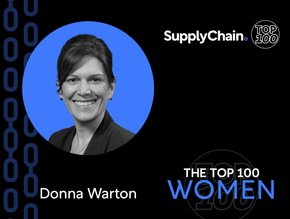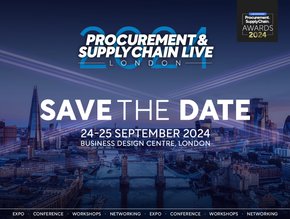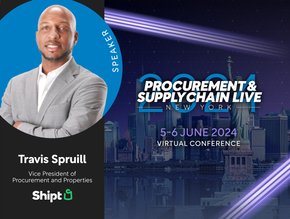S&OP planning in a state of flux, say EY & KPMG

Sales and operation planning (S&OP) has been around since the early 1990s, which saw the dawn of decision-making processes designed to balance demand and supply, integrate financial planning and operational planning, and link strategic plans with day-to-day operations.
In short, it’s an integrated monthly process that helps businesses manage in the midst of change – and we’ve never before experienced such times of change as these past few years.
But is S&OP itself having to change to meet these challenges? To help us answer this, and other questions, we turned to Paul Brody (PB), Global Blockchain Business Lead at EY, and Mark Levy (ML), who is Supply Chain Planning Advisory MD at KPMG.
How is digitalisation changing S&OP?
PB: S&OP has been digital for decades. The opportunities on the horizon aren't about going from analogue to digital, but from silos to integration. Nearly all big companies have digital data, but it’s locked in their own operational silos. The way forward on this is, I believe, blockchains.
Blockchain standardises how we represent supply chain assets and also enables visibility to key business partners. For example, a joint initiative with [blockchain protocol] Polygon is enabling EY clients to conduct private transactions, and the [open-source blockchain] Ethereum Mainnet has been pivotal in this process.
Because we don’t re-enter data each time an asset crosses company boundaries, we get shared data and the right preconditions for really great S&OP.
ML: Our perspective is that, first and foremost, S&OP is a process-first discipline, especially given its cross-functional nature. However, it does benefit enormously from technology. For example, the scenario analysis used to drive alignment and make decisions is much easier with digitisation. This makes it easier to achieve and sustain meaningful S&OP.
What are today’s main S&OP challenges?
PB:The biggest challenge is visibility beyond the four walls of the enterprise. Supply visibility and reliability is by far the biggest cause of S&OP failures, although sometimes it’s also to do with channel execution issues.
Suppliers can be reluctant to share fully their true situation, particularly when they’re managing allocations and constraints, or their own supply shortages. They’re often reluctant to cause anxiety with key clients until they’re sure there will be a short-fall.
ML: S&OP should be about making cross-functional decisions, but this requires dealing with several hurdles, including: lack of clarity around S&OP’s role; S&OP being overtaken by near-term issues; demand planning not providing quality inputs; and scenario planning not being supported within business units, let alone globally.
How can these challenges be overcome?
PB: Supply visibility requires accurate enterprise-resource-planning data, not data that’s massaged or delayed. It also needs an update-once, shared-everywhere model, not back-and-forth phone calls that always result in mangled data.
ML: If the executive team feels the S&OP process is adding value – or will – then challenges can be overcome. Achieving executive engagement needs: clear focus of the S&OP process, supported by scenario analysis; aligned incentives, to ease decision making; a tactical demand and supply planning process to keep S&OP forward-looking; and proactive change management and education, to ensure the organisation supports and adopts the new process and ways of working
What does meaningful S&OP collaboration look like?
PB: The best S&OP processes I’ve seen are collaborative problem-solving exercises, not angry discussions about what is and isn’t true. Companies that are good at S&OP do the background work in advance, and start collaboratively because they’ve already agreed on where the trouble-spots are.
ML: S&OP collaboration is meaningful when the process results in better, nimbler decisions and execution. In S&OP, decisions need to be made with analysis under several demand scenarios. Whether the decision turns out to be either fortunate or unfortunate, it will be clear where and how it was made, and there’s no blame-game to play because the decision-making process was clear.
Is the Great Resignation impacting effective S&OP?
ML: There are few companies that feel they have enough talent to support daily execution, cross-functional processes, and transformations concurrently.
If the S&OP process is operating well and is supported by technology, then companies can sustain their progress. But it’s a different story with companies that are only just beginning to build a meaningful S&OP process.
A primary reason transformational programmes fail – especially technology-enabled programmes – is that they’re not resourced properly. Expecting to pull top talent from existing operations and implement a transformation unassisted is risky, especially in current volatile conditions.
Without adequate support, your top talent may believe they are being asked to assume career risk on such a project.
Where do you see S&OP being in 5 years' time?
PB: I’m hoping for two key outcomes in the next five years.
First, I think we’ll see widespread adoption of tokenisation and blockchain usage in supply chain management. Firms will use a combination of standardised tokens and customised privacy rules to run their supply chains on the public Ethereum blockchain. Those companies with truly end-to-end visibility will be positioned to replace inventory with information and do so with far more confidence than ever before.
Second, and more aspirationally, I think we’ll see the beginning of the end of top-down operations planning. Instead of ‘planning’ a supply chain, companies will shift towards guiding self-organised networks. Smart contracts will have the power to automatically reorder supplies, and the purpose of the S&OP process will be to adjust the ecosystem guidelines and strategy, but allow the network to largely run itself.
ML: S&OP has been around for 40 years, and in the next five, I see S&OP still being underexploited by many. S&OP is difficult to sustain without executive engagement and supporting technology.
The increased realisation that S&OP needs to be combined with sales and operations execution (S&OE) will help mature the S&OP process, but, in some cases, it may distract attention from enhancing S&OP itself.
We anticipate:
- Increased focus on central planning to maximise the value of shared resources and trading partners.
- Improved cross-functional support and better aligned incentives
- Increased use of scenario planning and analytics to support decision making
- Increased use of process orchestration – often from a low-code platform
- More mature companies working hard to make ‘true’ integrated business planning work, eliminating duplicate S&OP and financial planning activities






